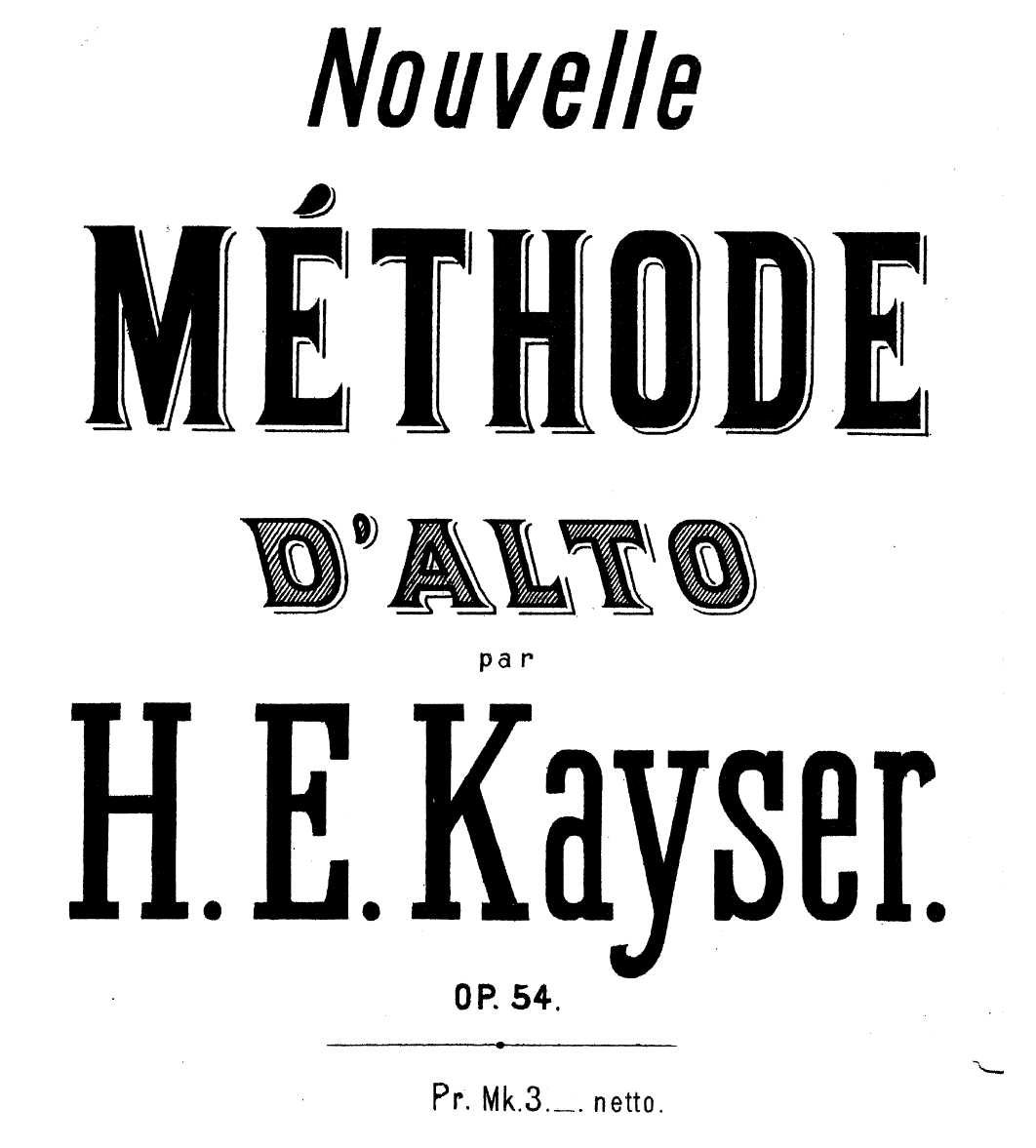
Kayser and the Viola
Cover credit: New Method for Viola
When I started playing the viola about half a year ago, before my first lesson, my teacher sent me a link to a score of Kayser's 36 Etudes for the Viola, Op.43, for me to "get familiar with reading the alto clef". This is because, while I have played the violin many years ago, he was certain that I must not have read this book before — "nobody plays them" — as he later on added.
Initially, I didn't enjoy this book neither. I might have picked some very bumpy etude for myself — like this one, I couldn't do all the fz followed by p things:
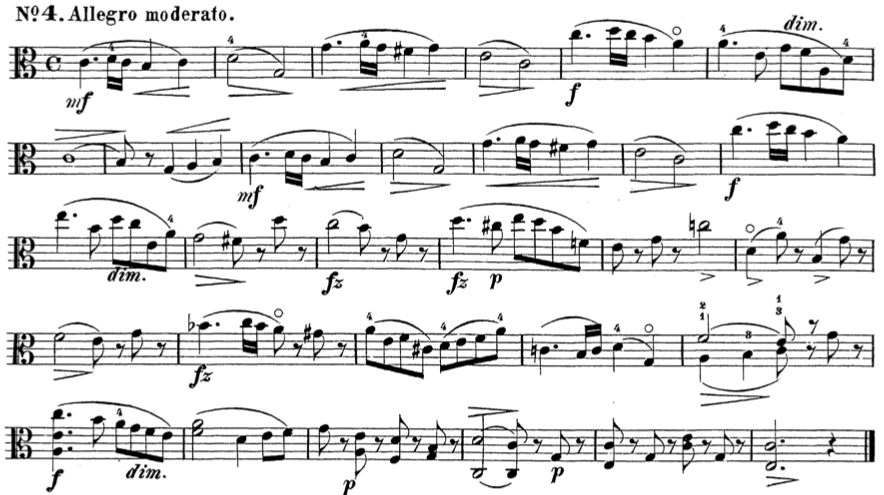
Happily we didn't stay there for long. We've read only a few pieces from the viola book before switching back to the more common, Kayser's 36 Etudes for the Violin, Op.20 (transposed for viola). And that's what I've been playing with my teacher since then. Although, a weird person as I am, for instance, I would occasionally check back on the things (mainly food items) I don't like just to check whether I've changed my mind or not. Similarly, from time to time, I'd look back to the viola book and pick an etude or two to read, just for fun, and to see whether I can discover something nice.
And indeed I have — like this scherzo, it sparks lots of joy both to play and to hear. Especially that weird C-flat (wouldn't that be a B?) registers exactly what a scherzo sounds like to me:
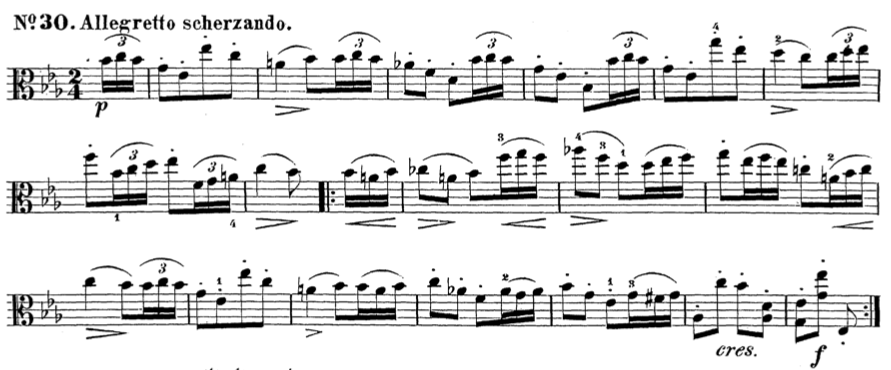
And check this one as well. Look at those waves of notes, they sound so immensely beautiful and I can't help playing it again and again even though I couldn't get the bow crossings land on the right rhythm, and perhaps especially because I couldn't get the bow crossings land on the right rhythm. I'm also particularly fond of those nifty lifts of the bow at the end of each motif, with a yearning land to start the next:
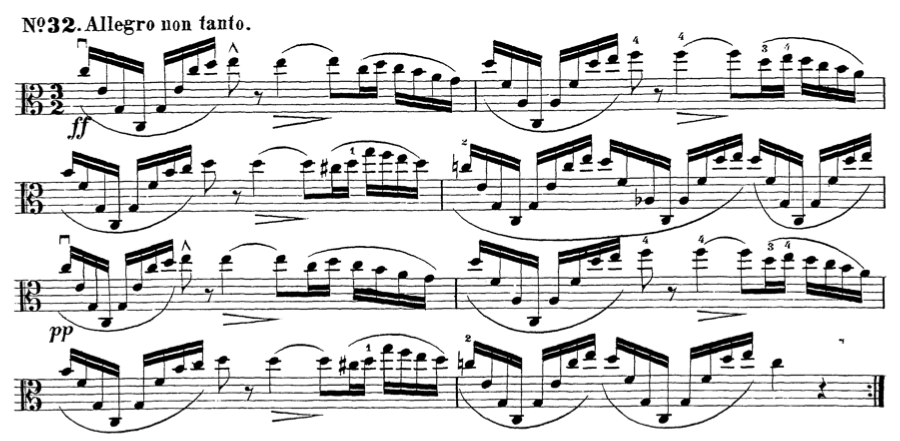
I don't know, nobody plays them, seriously?
So, I went on to try to discover what kind of pedagogue Kayser was. Good luck to me, you may say, because here's the full body text about Heinrich Ernst Kayser from Wikipedia:
Heinrich Ernst Kayser (16 April 1815 in Altona, Hamburg – 17 January 1888 in Hamburg) was a German violinist, violist, pedagogue and composer.
And here's the entry about Kayser in A Biographical Dictionary of Musicians:

This is a bit disappointing. Kreutzer has so much more information out there, anecdote, even, how Beethoven had written a sonata dedicated to him that he didn't like. Exploration about Kayser seems to be coming to an end right at the beginning. I have so many questions I want to know about him:
- What kind of teacher was he?
- Who were his students?
- How did he end up writing a viola book?
- Did he like the viola?
- Did he perform?
- Did he self-identify as a violist or a violinist?
(Spoiler: I still have no answers to those questions)
Now that very little has been said about him, we must then rely on some other clues. His violin etudes was Op.20, of which the earliest publication I found was by Cranz in the year of 1848. And his viola etudes was Op.43, published in 1870. He was 55 years old at that time, maybe he discovered the viola later, or maybe he was teaching some viola students? Sad that we have no way to know.
Although, there are a few notable and interesting facts about this new viola book. First of all, most etudes are shorter than the violin's. They're much shorter, in fact, so short that they fit nicely in one book of fewer than 20 pages. But those are legit exercises albeit being supremely concise. Take the aforementioned No.32, that's quite some effort for me on the string crossings and the rhythms, and really fun to try to figure them out! Anyway, I feel Kayser has leveled-up. He now can pack the exercises into shorter etudes, so short that I find myself look forward to them more. And another benefit is of course you get to practice the techniques with much less volume of notes you have to read.
Another fun fact is that he is leaving more instructions on how to practice the etudes, like this:

There aren't too many such notes in the Op.43, but this is progressive. Later on in his New Method for Viola, Op.54, he went ahead and annotated them much more. Published 3 years later in 1873, the book starts from the very basics such as explanations about notes and crochets and exercises for open strings, followed by as many as 60 exercises leading up to (I think) his Op.43 viola etudes, making it a truly responsible guide to start with the viola:
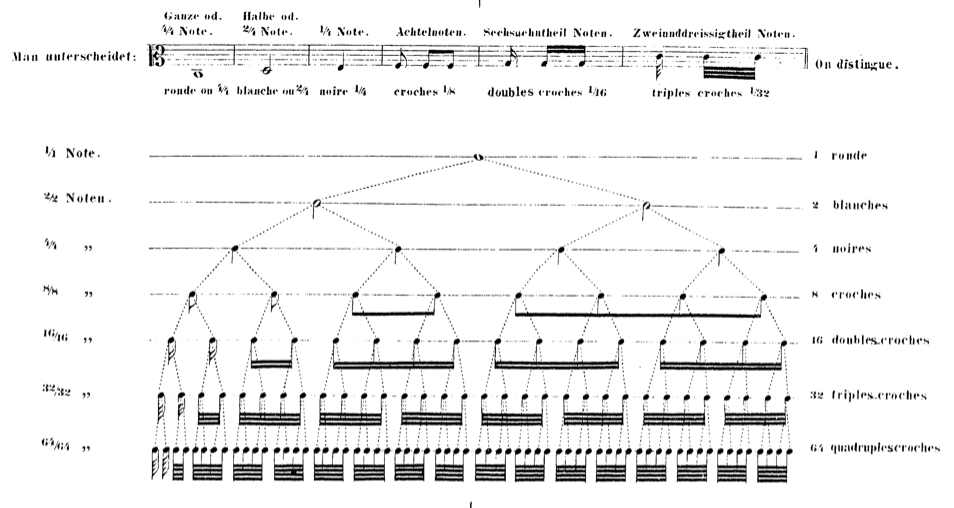
Did he teach someone to play the viola from the very beginning? I mean, did the student start directly on the viola, without the violin?
Speaking of the violin, it seems that he was teaching the violists on a violin. Because with many of those etudes he also wrote the accompany part for the teacher, on a violin:
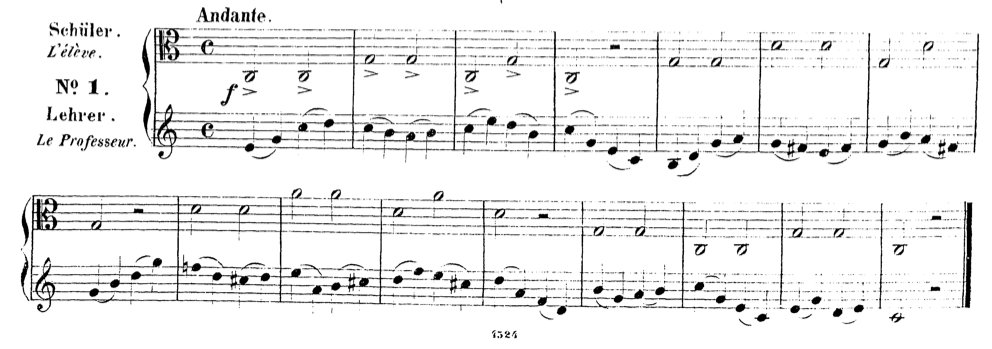
Both myself and my teacher started on the violin. And recently as I am playing the Violin No.10, my teacher has me begin practicing this etude with double stops. I was very bad at double stops on a violin, that made me extra patient with the new encounter this time. I did okay for the first time, I guess. And yet it's still a particularly difficult etude just by itself. My teacher mentioned that Kayser didn't write anything easier prior to that, so there's nothing leading up there, and many teachers would just skip it. And guess what I found, Kayser wrote something similar but easier later on:
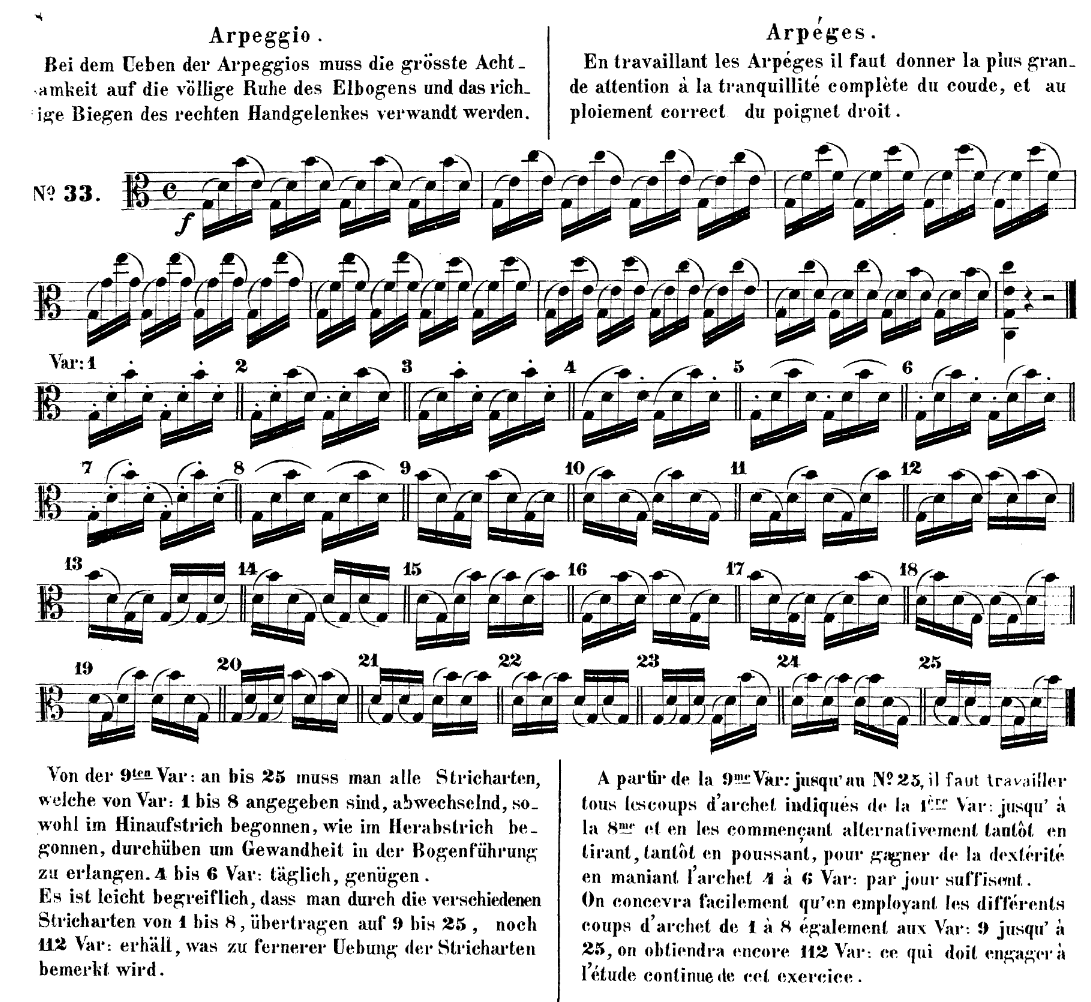
This is New Viola Method – No.33. And he has left a generous chunk of practicing notes:
When practicing the arpeggios, the greatest care must be taken to ensure that the elbow is completely calm and that the right wrist is bent correctly.
From the 9th var: an to 25 you have to practice all types of stroke, which are indicated by var: 1 to 8, alternately, both started in the upstroke and started in the downstroke, and to gain dexterity in bowing. 4 to 6 var: daily, enough. It is easy to understand that the different types of strokes from 1 to 8, transferred to 9 to 25, give another 112 var: which is noted for further practice of the stroke types.
(translated by Google)
But it is indeed a simplified version of the Violin No.10. It's notably shorter, and chords are arranged in such a way that the fingerings move systematically and progressively. Such a discovery!
Coming out from early Romantic period, Kayser also threw in an etude for independence of fingers. It has two voices, a top voice being relatively static, and a bottom tonal voice for the designated moving finger. The setup makes the etude manageable even for a beginner (in fact, I have no grounds to say that, I just feel it's a manageable two-voice) and is creating an organ-like sound that can be quite exciting for beginner violists like myself. Furthermore, I really like how he wrote them in separate lines, making it look much less scary and it helps with a clearer mind:
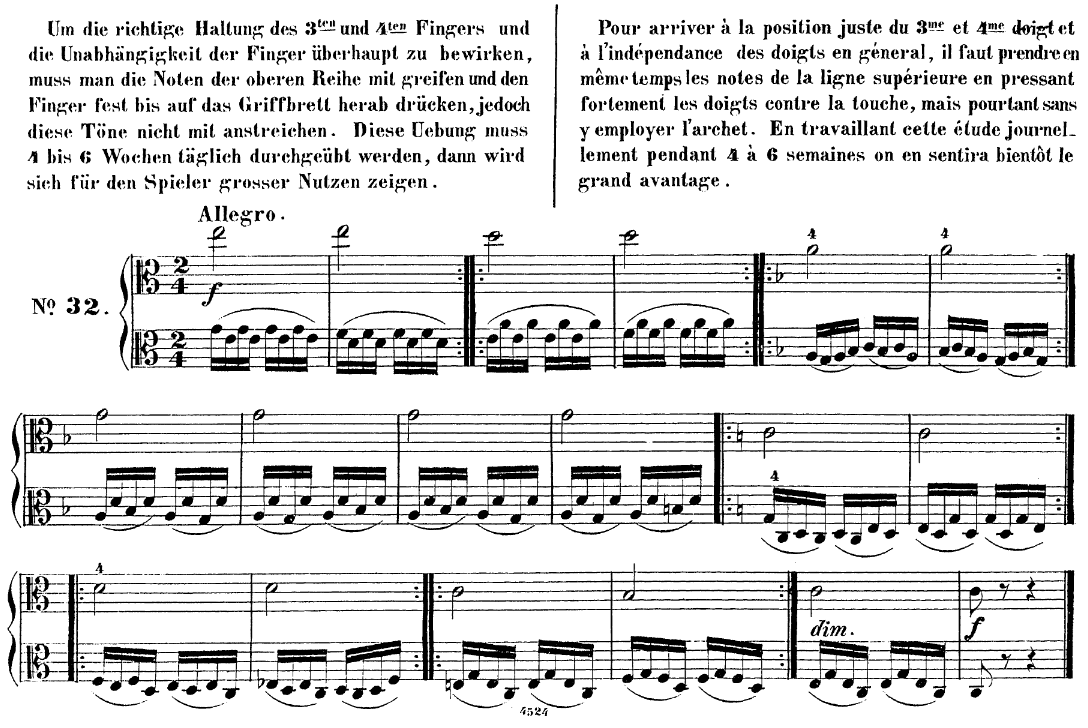
Here's the translated note:
In order to achieve the correct posture of the 3rd and 4th fingers and the independence of the fingers at all, one must grasp the notes in the upper row and press the finger firmly down to the fingerboard, but do not mark these notes. This exercise must be done daily for 4 to 6 weeks, then it will be of great benefit to the player.
Later on, he threw in a few scales, Db, Gb, and Cb "majeur", “Here are a few more scales which must necessarily be practiced,” he said, followed by some devilish key signatures of many sharps.
I guess his students were preparing for ABRSM then? Just kidding xD
And by the way, the duets are becoming more complex as well:
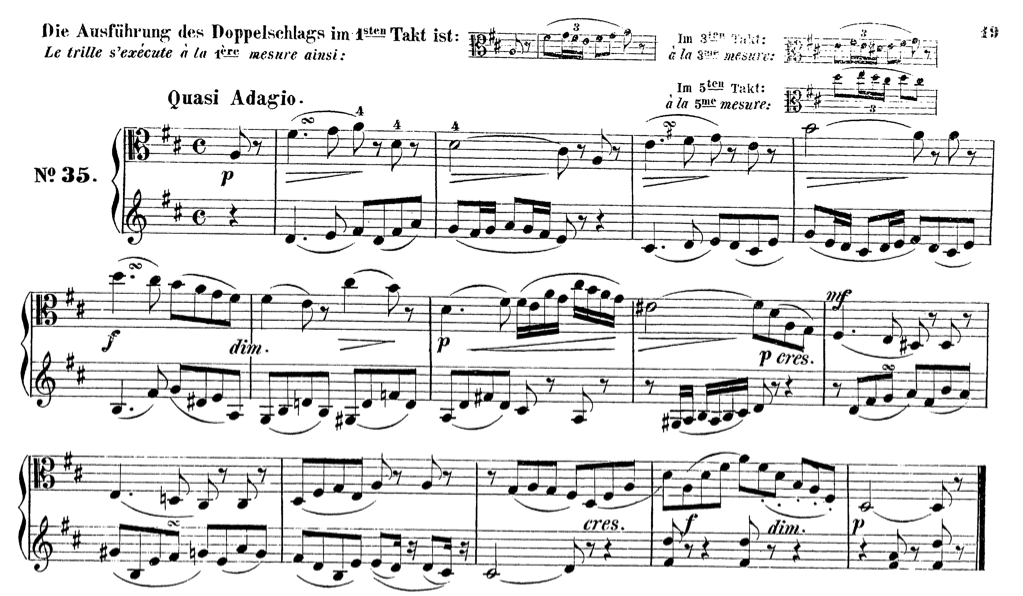
With roughly equal level of conciseness in each etude, however, the New Viola Method book is significantly longer, counting up to as many as 60 etudes. It seems to me a nice precursor to his own viola etudes published earlier. And, notably, it could be a precursor to the beloved Kreutzer as well — likely due to the similarity in the techniques being addressed, some of those etudes look like a decent predecessor to some of Kreutzer's etudes, look at this No.46:
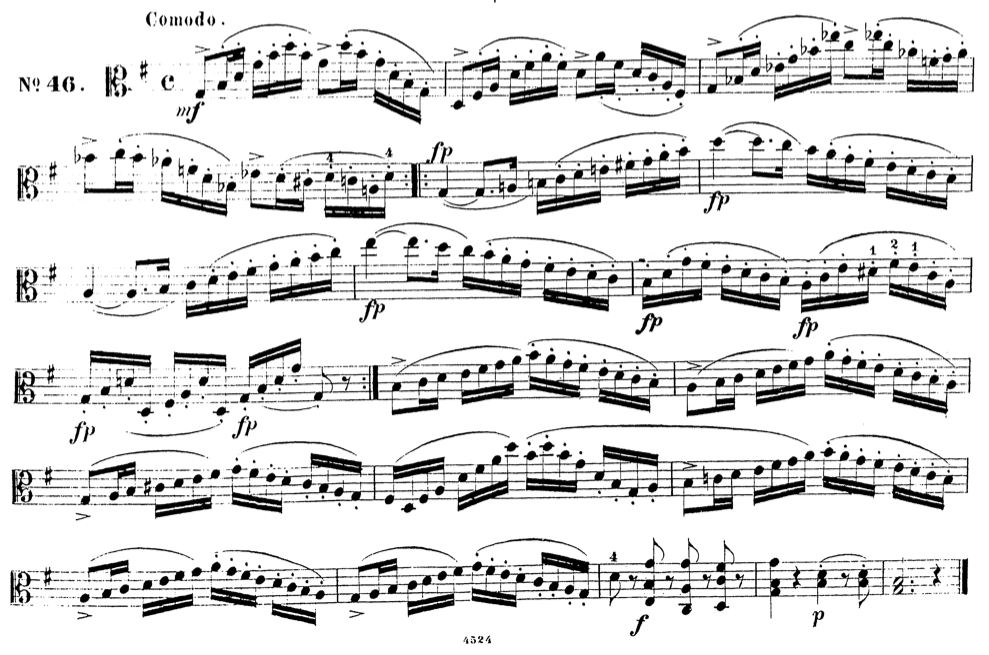
And here's Kreutzer No.4:
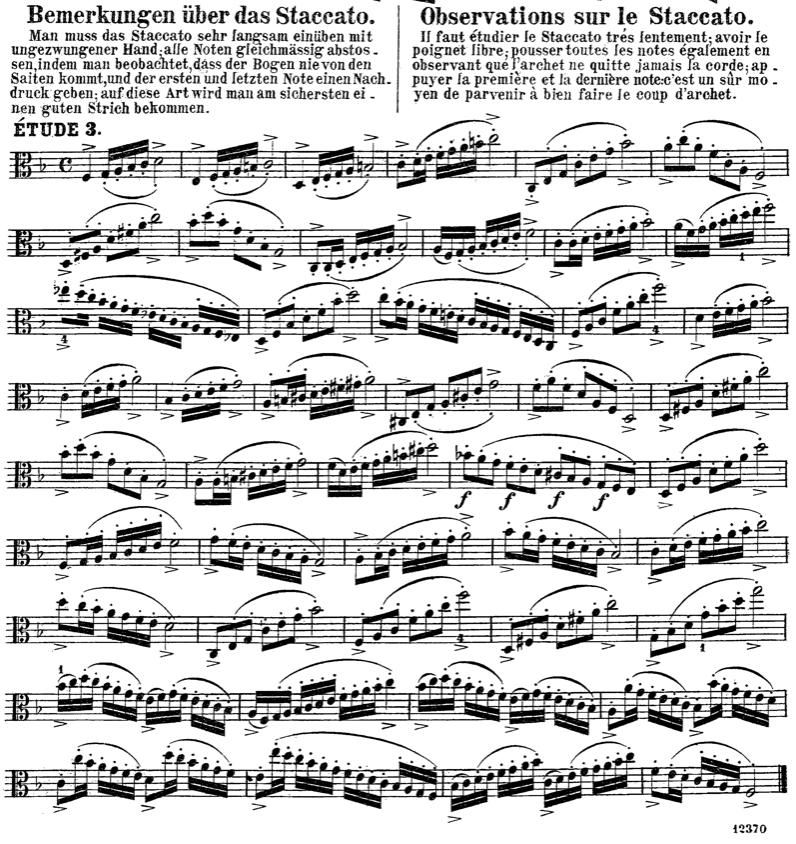
If the format looks familiar to you, that's no coincidence as well. This version of Kreutzer's Violin Etudes is actually transcribed and annotated by Kayser! I haven't found these notes in other edits or arrangements of Kreutzer's neither, so I guess they're by Kayser too.
So what theory do we have here now? Completely unjustified: Kayser became interested in teaching viola later in his life, composed a book of much more concise etudes directly addressing the viola, moved on to composing another beginners' book for viola as a violin teacher, and then published a book of Kreutzer's transcribed for viola.
Thank you, Kayser, for your commitment to the viola!
p.s., he published his arrangements of quite a few violin and viola duets by Vaclav Pichl as well. He must have had some very earnest violist students!
List of referenced publications
36 Etuden für Bratsche
Kayser's etudes for viola, published in 1870, 22 years after the initial publication of his violin etudes, the book features shorter etudes dedicated for the violaNeue Schule für Bratsche
Kayser's beginner viola book, published in 187340 Etüden oder Capricen für die Viola
Kreutzer's violin etudes, transcribed by Kayser for the viola in 1875